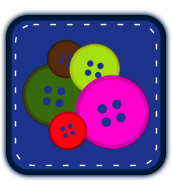What does being part of a “featured” section mean? By a “featured” section I’m talking about those sections that are supported by most big markets. Amazon, Chrome Marketplace, Android Market, and so on. Even Kickstarter is a culprit. It’s quite sad that so many of these websites provide a “featured” section, and thereby tend to be known for supporting startups or independent application developers. It’s sad because the overwhelming evidence shows it’s simply not true.
If you look at so many of these sites you’ll see that a majority of their “feature” applications are actually from big-name companies. So if you’re a big-name company it works out, you’ve got the in. Another aspect is that they simply won’t feature you unless you having something that has lots of bling and flashy lights. To understand more why I say this, simply view the Kickstarter page describing a “featured” project. They indicate you need not only a good following but also an intriguing video and creative idea for your project. All these caveats, in fact, still simply indicate that to be featured, means to be hand chosen.
Alright, I know I’m complaining here, but this is honestly frustrating. We aren’t unwilling to put the effort in but half of this featured action is all about who you know. We’re in small town Corvallis, we don’t know many people. With over 6,000 facebook likes, I feel like our products aren’t something to shirk at. Then more of the frustration is simply because it doesn’t feel like these big-name companies want to help the startup. They need to keep their money floating and producing, so they don’t bother truly supporting those who can come up some of the startling innovations out there. Now dies my admiration of big tech companies, and in its place is, “Oh yeah, they’re just another big company...they act like all the others do.”
Therefore when you have other underhanded things, like the app-of-the-day Amazon treatment, you’re not as surprised. In case you’re unaware, it seems that most people who become app-of-the-day for Amazon are asked to sign a last minute agreement that states they actually won’t get any money for their app, and they must actually give it away for free if they want to be app-of-the-day at all. So, unless you’re already popular enough that you can “negotiate”, you actually don’t get anything from app-of-the-day except one large free give-away. You get promotion, but no actual money. Since you’re giving away you’re paid version, how much does this really help you? So wait, how does that help the fledgling developers? How do these supposed “Tech Giants” actually support startup gaming companies again? I understand these “featured” sections are actually to support the their own market. I guess I wouldn’t be so upset if these big companies were just honest and stopped claiming to be support the small developer.
 For this function I need three different variables (starts1,starts2,length). Starts1 and starts2 are the list of locations the prefix and suffix were respectively found. Length is the total length of the prefix of, example, “atg” which could be “at”. The function I need to create must create a list of combinations with a space between the two different substrings, or prefixes and suffixes. This represents the possible misspelling.
For this function I need three different variables (starts1,starts2,length). Starts1 and starts2 are the list of locations the prefix and suffix were respectively found. Length is the total length of the prefix of, example, “atg” which could be “at”. The function I need to create must create a list of combinations with a space between the two different substrings, or prefixes and suffixes. This represents the possible misspelling. I begin in my function by identifying my list as ‘finalmatches’, and m as equal to length. Then I proceed to process the starts1 and starts2 lists through two “for” loops. These two loop sets will compare all the different possible combinations of substrings with the addition of one space. It will then add all of these combinations to the list “finalmatches” and return that last back into the code for use after that function is called.
I begin in my function by identifying my list as ‘finalmatches’, and m as equal to length. Then I proceed to process the starts1 and starts2 lists through two “for” loops. These two loop sets will compare all the different possible combinations of substrings with the addition of one space. It will then add all of these combinations to the list “finalmatches” and return that last back into the code for use after that function is called. 









 2012 FlamingLunchbox unless otherwise noted.
2012 FlamingLunchbox unless otherwise noted.